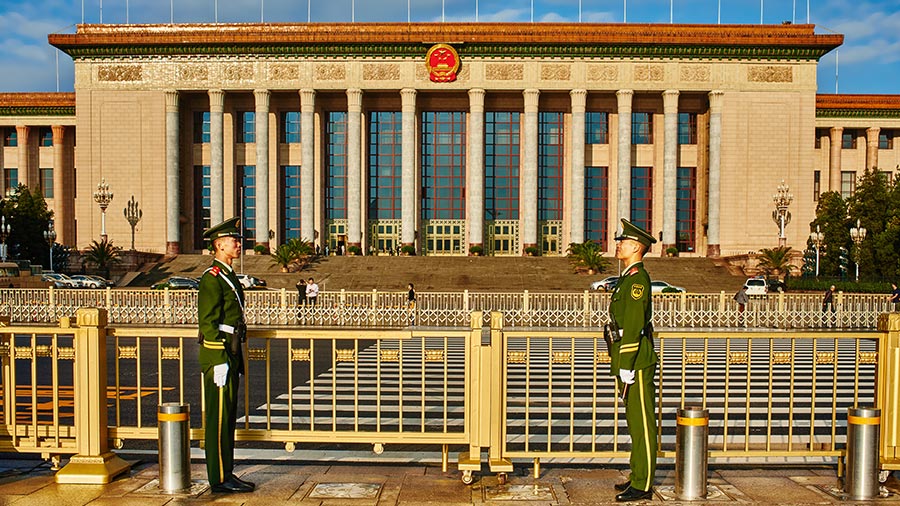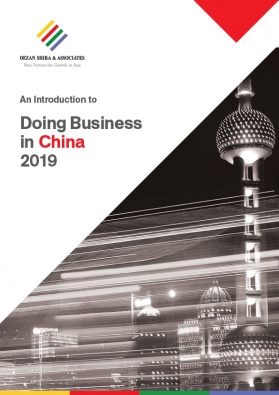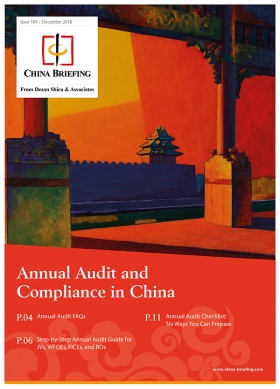China’s Two Sessions 2019: What to Expect

China’s Two Sessions are its biggest political meetings of the year. China Briefing looks at the key issues that might take center stage at this year’s meetings and any policy surprises we can hope to expect.
This weekend, China’s political, business, and social elite will flock to Beijing to attend the country’s annual Two Sessions meetings.
The Two Sessions is the popular name for the back-to-back meetings of two of China’s major political bodies – the Chinese People’s Political Consultative Conference (CPPCC) and the National People’s Congress (NPC).
The CPPCC is a consultative body that includes members from various aspects of Chinese society, such as entrepreneurs and movie stars, and will convene on March 3. The NPC is China’s national legislature and will gather on March 5.
At the NPC, Premier Li Keqiang will deliver the annual Work Report and lay out the country’s policy priorities for the coming year. These policies will come under greater scrutiny than usual as China is amid a prolonged trade war with the US and its economy is in its most vulnerable state in years.
The policies put forward at this year’s Two Sessions meetings will therefore help illuminate whether China will alter its recent strategies or double down on them. Here, we lay out what to expect at the upcoming Two Sessions.
Political context
Last year, the Two Sessions sent shock waves through the China-watching world as a triumphant President Xi Jinping, fresh off consolidating his power at the 19th Party Congress, removed term limits on the presidency. This year, the mood will be decidedly different.
US-China relations are at a multi-decade low, with the two countries locked in a trade war since the summer. Meanwhile, China’s economy is decelerating and facing its biggest challenge since the global financial crisis.
Internationally, China is facing push back for its controversial Belt and Road Initiative, high-tech ambitions, and increasingly assertive diplomatic behavior. From Australia to Malaysia to Sri Lanka, China has been hit with a barrage of criticism and push back from countries around the world in the last calendar year.
These challenges have in turn invited questioning of the top leadership’s policy direction. Within this context, observers will be looking for any hint of a policy re-calibration, or if the Chinese leadership will decide to simply plough ahead.
Growth target
The announcement of the annual GDP growth target is one of the staples of the premier’s Work Report. Analysts carefully dissect the wording of any target, looking for extra meaning that could be included in the way the target is framed.
In 2018, China reported 6.6 percent GDP growth, meeting the target of “around 6.5 percent”. This figure would draw the envy of most countries but is still China’s slowest growth rate since 1990. Further, many economists are skeptical of China’s official statistics and believe that the real growth rate is significantly lower.
Several provinces and major cities in some of the country’s most economically important regions, however, missed their growth targets. Other indicators, such as the purchasing managers index (PMI), also support the notion that China’s economy is slowing down. February’s manufacturing PMI came in at 49.2 – where a number below 50 denotes contraction – representing the worst performance in three years.
Based off recent comments from government officials, China appears likely to set a GDP growth target of 6-6.5 percent. Leadership will likely attempt to shore up confidence in the economy by arguing that this lower level of growth represents a transition to more sustainable “higher quality” growth as the country embarks on a structural reform of its economy.
US-China trade war and economic reform
The US and China have been engaged in a tariff battle since July and have been negotiating a potential trade deal for even longer. The US accuses China of a host of “unfair trade practices”, including mercantilist trade policies, currency manipulation, state-sponsored IP theft, and unfair subsidies for domestic firms and state-owned enterprises.
According to US President Donald Trump, the two sides are close to finalizing a trade deal – perhaps as early as this March. According to the US’ chief negotiator, Robert Lighthizer, the US and China remain far apart on a deal.
Traders and analysts will surely look for any hints from the Chinese side of whether a trade deal is in fact in striking distance. However, it is perhaps more likely that the US will only be referred to in vague terms, such as being part of a “challenging external environment”.
The ongoing trade war may also impact what policies are or are not announced at the Two Sessions. For example, the US trade demands include China adopting market-driven reforms, some of which are also supported by economists and technocrats in the Communist Party. Even if China were to adopt such policies, leadership may hold out to include them as potential concessions in a trade deal rather than announce them before an agreement is struck.
That being said, in the past year, China has extended olive branches to the US and foreign business community, such as through the recent announcement of a new Foreign Investment Law. China’s leadership may highlight and expand on policies such as these at the Two Sessions and hold off on announcing more significant reforms.
Other national-level policies that might be promoted include updates to the Xiong’an New Area and the Hainan Free Trade Zone, a progress report on rural revitalization and poverty eradication, and a signal for the loosening – or elimination – of the two-child policy.
Stimulus vs. debt management
After spending billions of dollars in stimulus to weather the global financial crisis a decade ago, China’s debts have rapidly ballooned.
In light of this, China has been undertaking an expansive campaign over the past few years to preemptively tackle financial risks and cut down on debt. China’s leadership considers these financial vulnerabilities as national security risks, referring to debt-ridden entities (both private and state-owned) as potential “black swans” and “grey rhinos” that could trigger a financial crisis.
Now that China’s economy is slowing, however, the financial and debt derisking campaign finds itself at a crossroad.
On the one hand, China’s debt and financial situation is still essentially the same tinderbox that leaders feared when they began the campaign, even if progress has been made on the issue. On the other hand, China is facing slower growth and declining confidence in its economy, and leadership may look towards financial stimulus to stabilize the economy and maintain employment.
These tensions are spilling onto the public stage. In recent months, government officials have simultaneously approved new infrastructure investments and encouraged banks to boost lending while at the same time ordering them to be vigilant about financial risks and to continue deposing off bad debt. These conflicting goals risk putting local governments and banks in a state of policy paralysis as they are unsure of what their priorities should be.
Rather than inject financial stimulus, in recent years, China’s economic planners have preferred boosting the economy through a combination of tax cuts and improving the overall business environment. Recent comments from Li firmly stating that there will be no “flood-like stimulus” coming suggest that this strategy will continue in 2019, with further tax cuts – like the simplification of VAT– to be introduced.
Financial derisking combined with tax cuts and other cost reductions seem likely to remain the way forward for China’s leaders. Nevertheless, the leadership may decide to temporarily ease the intensity of the derisking campaign, at least until a trade deal with the US is secured.
Stay tuned for surprises
Going into it, last year’s Two Sessions meetings were overshadowed by the politically important 19th Party Congress that took place only a few months earlier. However, when the dust settled, the Two Sessions carried its own surprises.
While last year’s elimination of presidential term limits stole much of the attention – for good reason – it was not the only significant and unexpected development at the Two Sessions. Last year, China surprised observers by announcing a massive restructuring of its political institutions, which affected over two dozen government bodies.
Because of the incredibly opaque nature of China’s political system, it is impossible to accurately predict exactly what will take place and when. Given recent developments in the country and the high-stakes international environment, it is not out of the realm of possibility to expect something more left field at this year’s Two Sessions as well.
About Us
China Briefing is produced by Dezan Shira & Associates. The firm assists foreign investors throughout Asia from offices across the world, including in Dalian, Beijing, Shanghai, Guangzhou, Shenzhen, and Hong Kong. Readers may write china@dezshira.com for more support on doing business in China.
- Previous Article China’s City-Tier Classification: How Does it Work?
- Next Article China-Chile FTA Upgraded, New Opportunities for Investors







